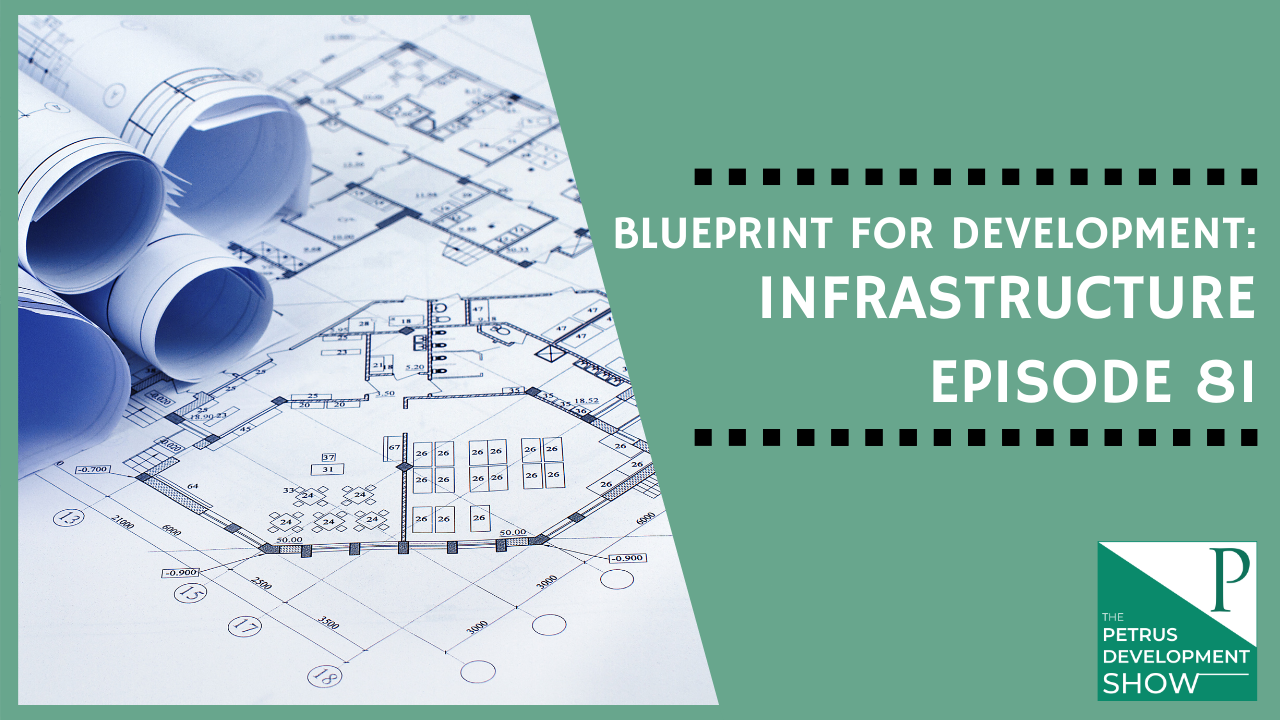Blueprint for Development: Infrastructure on the Petrus Development Show

In this episode we are introduced to the first of a four-part series "Blueprint for Development." This series will take you in-depth on how to create a successful development program and putting in place the building blocks you'll need to insure it's sustainability. Join Andrew and Petrus Consultant, Sarah Rose, as they dive into how to set up and create an infrastructure for your organization and your development goals. This "set up" is crucial to insuring that your foundation will remain strong over time.
Show Notes:
The interviews on this show are about identifying people who are leaders in development and how they've created programs that work. But we want to know what the building blocks are and how we get there.
These episodes will be covering topics on Infrastructure, Communications, Annual Fund and Major Gifts.
There's so much focus on the here and now that it's hard to take the time to look into the future of what it could look like.
The boring stuff: the stuff if you don't do at the beginning that will cause your program to crumble since there's not a firm foundation of infrastructure.
What Infrastructure might look like:
- One dedicated person with a handful of donor relations and that's keeping the lights on.
- Binders of check copies, or boxes of student registration cards, excel sheets, boxes or stacks of unorganized data
- Passively waiting for people to give.
Steps of Receiving a Donation
There's a check, there's a process, we have money in the account, we spend money where we can.
What Infrastructure could look like in a sustainable development program:
- Designated staff for development
- Creating a culture of development
- Regular staff meetings, ideally weekly
Development is all about relationship, you have to have the human resources, intentional human resources, to build relationships.
Setting up a Database
Getting and implementing a database. Recommendations are:
- Bloomerang
- Salsalabs
- Breeze church management
- Virtuous
How do you use your data, not just as a place where your records live? Do you want to use and learn from the data?
How do we prepare for those that come after me, so that the ministry can live past my time here?
It's not just a place for your records to live, it's also a place to manage your relationships.
What reports can you run with your database?
- Who gave?
- Gifts that were received that are a certain type of gift. ie: monthly donation, special fund, capital campaign
- Where people are in relation to geography?
- Who gave within a certain time period and then did not give again in this time period? (LYBUNT)
Tracking
Track how many phone calls, visits are you making? How long are those phone calls taking you to make?
Begin tracking how many calls you can make within an hour, so that you can better plan your time.
How long do things take me and what is the success of those things.
You need to get out of the idea that "God put us here and will provide." And begin seeing how we can be proactive in finding and engaging with donors.
Policies and Procedures
- Gift Acceptance Policy
- Cash, Check
- Stocks
- Real Estate
- Boats, Cars
- Livestock
Given a plan, guidance, script that allows you to get out of a reactive mindset and into a proactive mindset in running your ministry.
Up Next:
READY TO BECOME A BETTER FUNDRAISER?
Sign up below to receive tools, ideas, and inspiration to take your development efforts to the next level.
We hate SPAM. We will never sell your information, for any reason.


